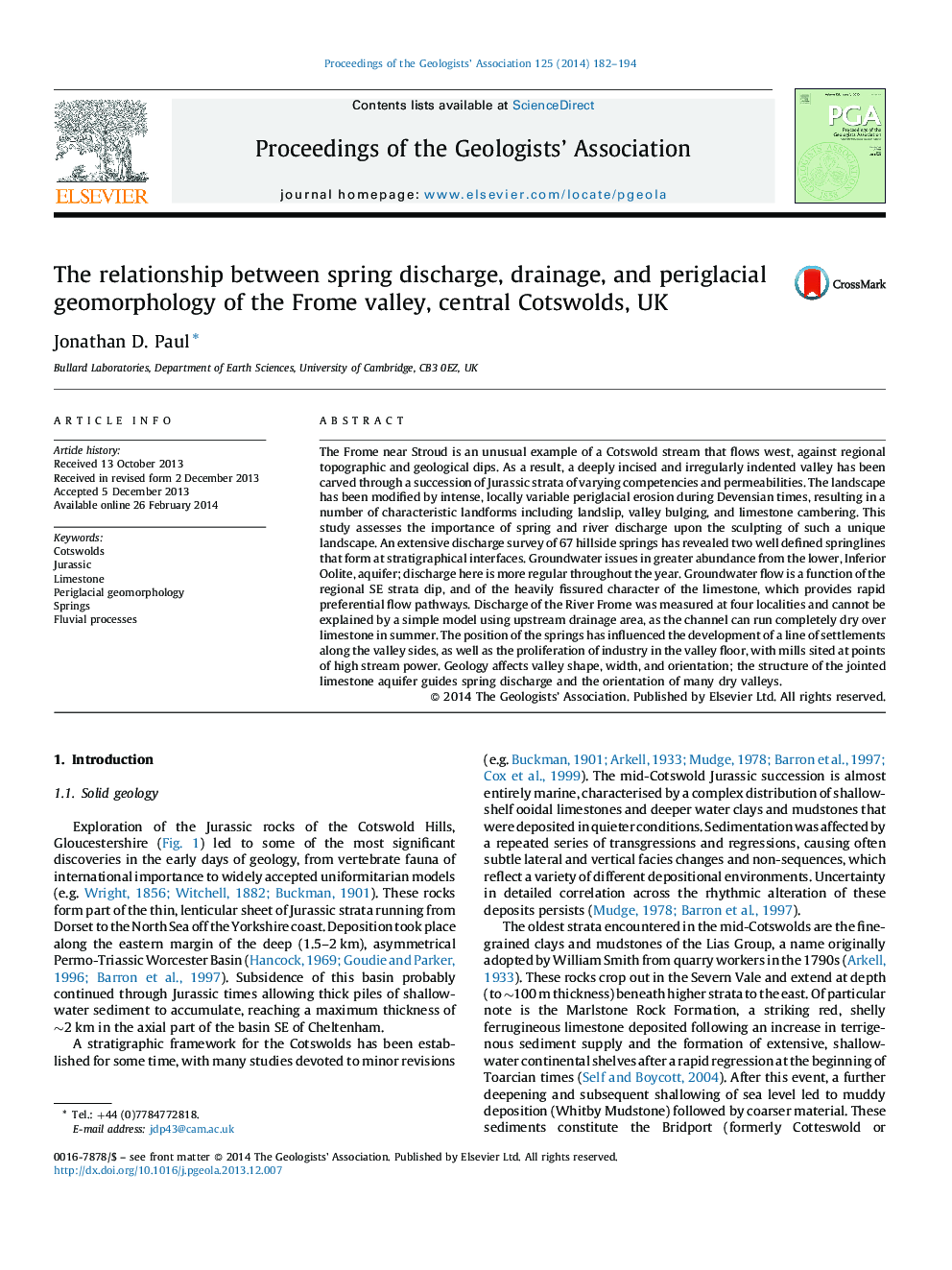| Article ID | Journal | Published Year | Pages | File Type |
|---|---|---|---|---|
| 4735089 | Proceedings of the Geologists' Association | 2014 | 13 Pages |
The Frome near Stroud is an unusual example of a Cotswold stream that flows west, against regional topographic and geological dips. As a result, a deeply incised and irregularly indented valley has been carved through a succession of Jurassic strata of varying competencies and permeabilities. The landscape has been modified by intense, locally variable periglacial erosion during Devensian times, resulting in a number of characteristic landforms including landslip, valley bulging, and limestone cambering. This study assesses the importance of spring and river discharge upon the sculpting of such a unique landscape. An extensive discharge survey of 67 hillside springs has revealed two well defined springlines that form at stratigraphical interfaces. Groundwater issues in greater abundance from the lower, Inferior Oolite, aquifer; discharge here is more regular throughout the year. Groundwater flow is a function of the regional SE strata dip, and of the heavily fissured character of the limestone, which provides rapid preferential flow pathways. Discharge of the River Frome was measured at four localities and cannot be explained by a simple model using upstream drainage area, as the channel can run completely dry over limestone in summer. The position of the springs has influenced the development of a line of settlements along the valley sides, as well as the proliferation of industry in the valley floor, with mills sited at points of high stream power. Geology affects valley shape, width, and orientation; the structure of the jointed limestone aquifer guides spring discharge and the orientation of many dry valleys.
